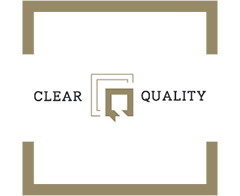How To Minimise CNC Machining Costs
March 2021Our top tips on reducing the cost of CNC machining for your business
· Remove text and lettering
· Stay clear of multi-surface finishes
· Consider your materials
· Buy bulk materials
· Rounding internal corners
· Limit tight tolerances
What is CNC?
Computer numerical control, otherwise called CNC refers to the automated control of machining tools and can include drills, lathes, 3D printers, or mills. Pre-programmed written code is able to control the engineering and manufacturing process by determining spindle speed, movements and RPM. This manufacturing program is now highly automated with modern CNC machining tools.
Is CNC machining expensive?
Like many professional practices, CNC machining is an investment for your business and prices vary between different subcontractors. Typically, the cost of CNC machining is based on machines, materials, tools, wear and tear, labour and set up costs. The more automated and modern your equipment, the cheaper CNC machining tends to be for a business, as the longer it takes a machine to create a part, the more expensive it will become.
At Oracle Precision, we offer the latest in CNC machining technology, from 5 axis machining, to project management, meaning we are able to compete in this highly competitive marketplace and showcase our skills on many different levels.
We invite any interested parties to trial our services by bringing us the design of your product and we will produce a prototype that is either cheaper or of a higher quality than your current manufacturer. Get in contact here to take advantage of this offer.
How do you reduce the cost of CNC machining?
Remove text and lettering
Adding unnecessary text and lettering to CNC machined parts is one of the most expensive ways to manufacture products. Extra time to set up machines is needed, meaning that costs can often spiral.
In order to increase efficiency and reduce costs, consider engraving processes, instead of embossing methods.
Stay clear of multi-surface finishes
Adding more than one surface finish to a part can significantly increase manufacturing costs, so it is vital to consider the finishing touches on your products when trying to reduce CNC machining expenditure.
Consider what finishing your products really need, look into as-machined surface finishes and see if this is relevant to your part.
Consider your materials
Different materials are easier to cut than others, so it can be a costly mistake to choose the wrong one for your part. At Oracle Precision, we understand the machinability and imitations of each material and have a huge selection at our disposal, helping you to choose the best possible ones for your products.
What is machinability?
The term refers to the ease with which a material can be cut and finished at the cheapest cost. Typically, machinability denotes the efficiency of a particular material and the softer that material is, the quicker a part is to produce. Small savings on each part can soon equate to large sums on big orders.
Rounding internal corners
Increasing the radius of internal corners on your products can contribute to less machine time and reduces this risk of tool breakage, ensuring your part is made in the most efficient way. This cost-effective tip means that you are able to have your part completed faster, for less.
Create thicker walls
Creating parts with thin walls are more susceptible to breakage during the manufacturing process, therefore you increase the risk of needing extra materials extra machine time if this does occur.
Increasing the thickness of your part’s walls will decrease the chances of these issues occurring, so will be more cost-effective in the long run. Oracle Precision will help you to choose the correct dimensions for your part, including wall thickness to ensure that your products are done on time and within budget.
Our capabilities
5 Axis CNC machining
The Oracle team have perfected our 5 axis CNC production processes for maximum output at the least cost to you and your stakeholders, whether you require machining for tilted surfaces or intricate 3D shapes. The CAM systems we use will ensure smooth and synchronised machining processes without toolpath collisions. Find out more about our 5 axis CNC machining services here.
4 Axis milling
This significant investment, which also includes the employment of extensive support systems such as CAD / CAM, has allowed Oracle Precision to offer an unrivalled service to the precision engineering sector with the capability to machine a diverse range of exotic and non-exotic materials, coupled with a single or multiple component capability (‘nesting’) with the minimal amount of ‘down-time’ and consequent ‘set-ups’ thus significantly reducing cost and lead times.
3 Axis CNC machining
One particular area of expertise is that of 3D machining where component complexity, whilst inherently providing a challenge, is able to be approached in such a manner as to simplify the manufacturing process in order to supply components not only to exacting customer specifications but with significantly reduced lead times, thus resulting in lower costs.
The total manufacturing process typically involves the procurement of a client(s) 3D CAD model, model verification, part programme construction direct from the 3D model, programme verification, direct program transfer via DNC, through to component manufacture and inspection with a minimum amount of set-up / re-fixturing / re-tooling etc.

